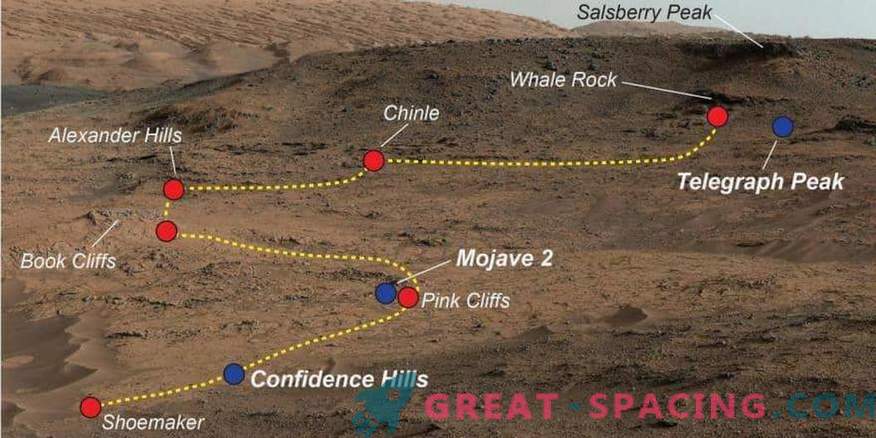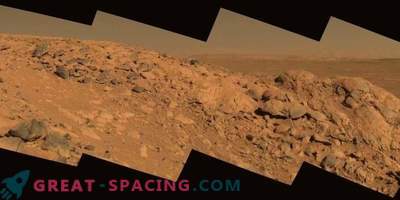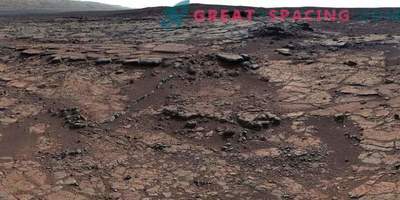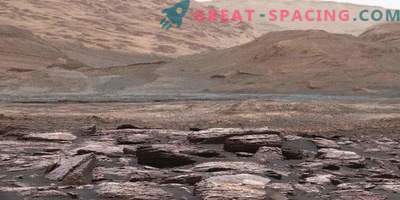
The Martian rover explored the “Pahrump Hills” area on the lower level of Mount Eolid in 2014-2015. The location of the studied targets is noted here. The blue spots are the places where the samples were mined by the drill.
NASA researchers have identified a huge variety of minerals in the original rock samples collected by the Curiosity rover at the lower levels of the Martian Eolide mountain. This indicates the presence of an aquatic environment and a change in conditions.
The device sank into the crater of Gale in August 2012 and reached the base of the Eolida in 2014. Layers of rocks in this place accumulated as sediments of ancient lakes left 3.5 billion years ago. The infrared spectrograph showed that changes in the minerals are noticeable in the lowermost layers. In a recent article, scientists discussed four samples.
Interestingly, about 3.5 billion years ago, life on our planet was just beginning to form. Therefore, there is an assumption that the young Mars may have resembled the same young Earth. Therefore, the environment could have life.
The minerals found suggest that several environments were present in the ancient Gale crater. These were reservoirs with different pH and variable oxidizing conditions. Most of the attention is focused on three patterns from the “Pahrump Hills”. The fact is that these found rocks are formed only in water conditions. The study of these samples will help to better know the Martian past. The CheMin instrument (“Chemistry and Mineralogy”) was used for the analysis.
It is based on minerals from primitive magma, rich in iron and magnesium. Rising higher, scientists found samples with elevated levels of silica. Then we found quartz and tridymite. The latter was especially unexpected, because in terrestrial conditions it is formed during the melting of the earth's crust. The strangeness is that plate tectonics were not observed on Mars.
The favorable conditions are indicated by finds in Mojave 2, where clay was located (created in the presence of water). Here were salt and jarosite. Hematite was found at the base, and magnetite on top. All this indicates the presence of ancient water.
To explain the diversity of minerals, scientists have advanced two theories. This could be due to more oxygen in the atmosphere or another factor. Or else liquids appeared at a late stage. That is, after the creation of mountain deposits, some acidic groundwater migrated to this area.
Researchers believe in the water past of Mars. Most of the liquid was located at the poles and high latitudes in the form of ice. In the process of melting water just evaporated into space. Rover continues to climb the mountain, so we expect new data.











































